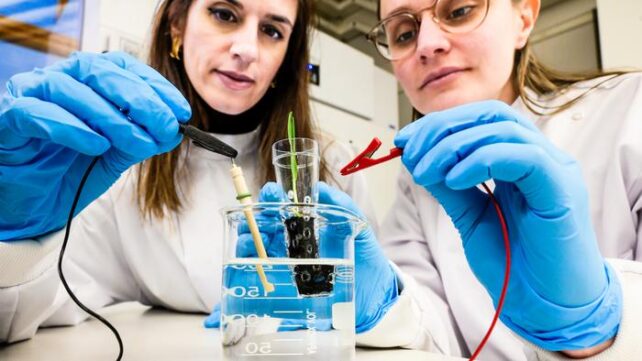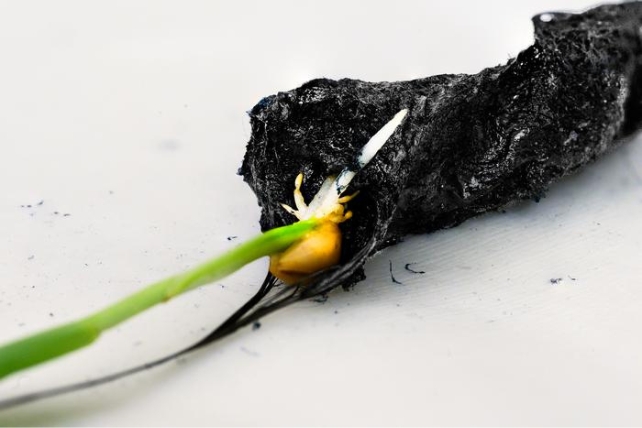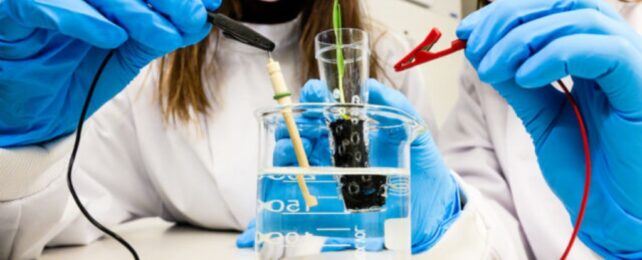Just like human nerve cells, plants are alive with electrical signals. Although we can't usually see or feel them, these pulses of electrical activity surge through plant tissues, triggering sudden movements or warning of newly inflicted wounds.
Now researchers have tapped into that circuitry to boost plant growth, finding that zapping barley seedlings with electricity helps new shoots grow faster.
What seems like a bit of ticklish fun could actually be a real boon to food supplies at a time when food security is of increasing concern, amid conflicts and climate change.
According to the United Nations Food and Agriculture Organization, between 691 and 783 million people faced hunger in 2022, representing an increase of 122 million people compared to 2019.
Researchers have experimented with electricity before to try to enhance crop yields, subjecting barley, pea seedlings, and Arabidopsis thaliana, a plant from the mustard family, to high electric fields.
To reduce the energy demands of such contraptions, the Swedish team behind this new study instead developed a low-power hydroponic system that applied a small but constant voltage to barley seedlings (Hordeum vulgare cv. 'KWS Irina') for five days.

Hydroponic set-ups swap soil for water, grow year-round, and use less fertilizer than other farming methods because nutrients and water can be recycled through the system.
Often used to grow leafy green vegetables in places as arid as Antarctica, another part of hydroponics' appeal is the way systems can be stacked to create space-saving vertical gardens.
While hydroponic farming clearly has lots of advantages, it's only one possible solution to improve food security that just so happens to be particularly suited to "areas with little arable land and with harsh environmental conditions," says bioelectronics researcher and study author Eleni Stavrinidou of Linköping University.
So Stavrinidou and colleagues plonked 5-day-old barley seedlings onto specially made scaffolds and applied a low electrical voltage for five days. They were then allowed to grow a further five days before harvest.
For the scaffold, which they dubbed 'eSoil', the team repurposed a material made of a conductive polymer and cellulose, an important component in plant cell walls.

On average, electrically stimulated plants had 50 percent more tissue, measured as dry weight, and were 30 percent longer than untouched plants after 15 days of growth.
It's not yet known how exactly the steady hum of electricity promotes plant growth. One suggestion is that electrically stimulated plants are somehow more efficient at taking up nutrients.
However, no differences were found in the nitrogen content of the seedlings after 15 days, with or without electrical stimulation.
What the researchers did find in subsequent experiments is that stimulated plants process nitrate more efficiently, with lower levels of the inorganic nitrogen compound than their non-electrified counterparts, suggesting they had converted it into nitrogen-containing biomass.
"But it's not clear yet how the electrical stimulation impacts this process," Stavrinidou says.
Surprisingly, the researchers discovered that the seedlings' growth spurt didn't occur right after electrical stimulation, but in the five days of growth allowed after the electrodes were switched off.
This suggests that even short, small doses of electrical stimulation might have a lasting effect on plants.
"However, our work focused on seedlings, and therefore, more studies are required to show whether growth enhancement by stimulation treatment at the early stages of growth impacts the whole growth cycle of plants," the team writes in their paper.
There are also many more factors than plant growth and crop yields to consider if we're going to produce enough food for the world, and do so sustainably.
The study has been published in PNAS.
